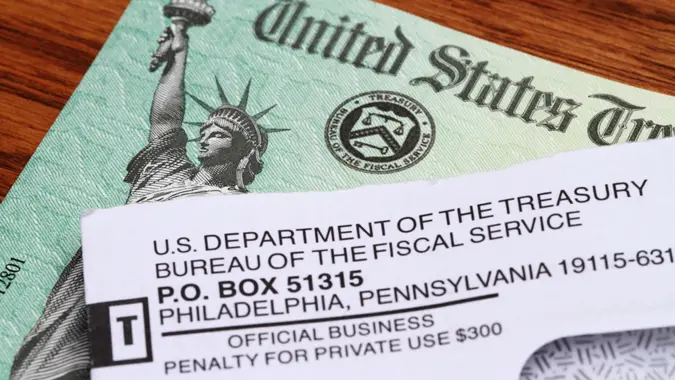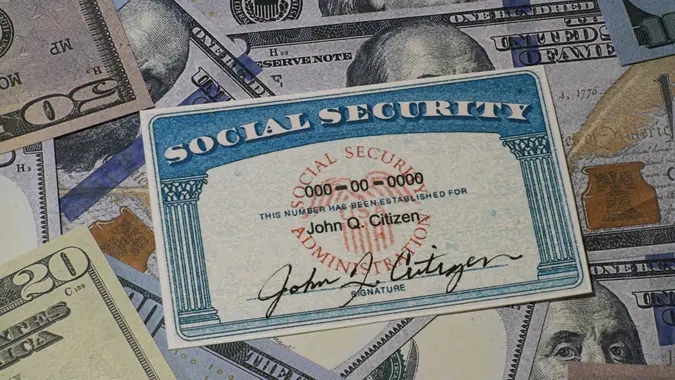Social Security: 4 True Factors That Have Led to the Program’s Shortfall (and One Myth To Stop Believing)

Commitment to Our Readers
GOBankingRates' editorial team is committed to bringing you unbiased reviews and information. We use data-driven methodologies to evaluate financial products and services - our reviews and ratings are not influenced by advertisers. You can read more about our editorial guidelines and our products and services review methodology.

20 Years
Helping You Live Richer

Reviewed
by Experts

Trusted by
Millions of Readers
When Social Security was introduced more than 80 years ago, it was supposed to be a self-sustaining program funded through payroll taxes. Any taxes that workers paid while employed would return to them in retirement in the form of monthly checks. But that system didn’t work as planned, and now the Social Security Administration finds itself facing a funding shortfall that could lead to lower benefits.
The shortfall mainly involves Social Security’s Old Age and Survivors Insurance Trust Fund, which is expected to run out of money in about a decade. When it does, Social Security will be solely dependent on payroll taxes for funding — and those taxes currently pay only 77% of benefits.
Social Security’s uncertain future has drawn the attention of everyone from retirees and younger workers to economists and 2024 presidential candidates. A number of ideas have been proposed to fix the problem, ranging from higher payroll taxes to privatization. There has also been plenty of blame thrown around as to why Social Security got to this point.
One theory making the rounds on the internet is that Congress pilfered Social Security’s trust funds for other purposes, The Motley Fool reported. According to this theory, lawmakers took excess revenue from Social Security taxes and put it to use elsewhere. But that’s more myth than fact, according to The Motley Fool: “Congress hasn’t stolen a dime from Social Security; every cent in asset reserves is accounted for; and the program is generating interest income on its excess cash.”
So what has contributed to Social Security’s shortfall? Here are four factors that definitely played a major role.
Boomers Started Retiring
The term “baby boomer” entered the popular lexicon because Americans who fall into the demographic represented a population boom following World War II. The large population of boomers eventually entered the workforce, and their payroll taxes helped create a Social Security funding surplus that was eventually put into trust funds.
But when boomers began retiring last decade, they suddenly stopped contributing to Social Security and started drawing benefits from it. As more boomers retire, there aren’t enough new workers entering the workforce to make up the funding difference.
Fewer Legal Immigrants
Legal net migration into the United States has been declining for a quarter-century, The Motley Fool reported. Because immigrants coming to the country tend to be younger, they spend decades in the labor force contributing to Social Security payroll taxes. Fewer legal immigrants means fewer payroll taxes.
Birth Rates Have Fallen
Another problem is that birth rates have dropped to historic lows because couples are waiting longer to get married and have kids. Many are also having fewer kids than previous generations due to rising costs and other factors. Lower birth rates mean fewer workers paying into the Social Security system.
Income Inequality
As The Motley Fool noted, four decades ago more than 90% of all earned income was subject to Social Security’s payroll tax. As of 2021, that percentage had dipped to 81%. In 2024, earnings above $168,600 are not taxed by Social Security, and a lot more people — about 6% of the U.S. population, according to the Peter G. Peterson Foundation — are passing that threshold now than in the past. As a larger percentage of Americans earn wages not subject to Social Security taxes, the program has less money to distribute to beneficiaries.
 Written by
Written by  Edited by
Edited by 

























